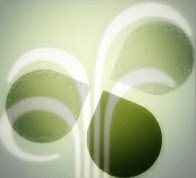
More than 80% of the population lives in
rural villages. Even for the city dwellers, there is a strong connection to the
‘home village’. Most earn their living from the land, either by farming their
own, which is becoming less common as the population increases, or by working
for someone else. Rural lives are bounded by dependency: on the elders of the
family, on the employer or village patron, or on some other authority figure.
Loyalty to the group is an essential culture value, and one that carries over
to urban life.
Pohela
Boishakh
|
At the core of this group is the extended
family which forms the basis of social and economic live in Bangladesh and
remains a cornerstone despite the shift towards nuclear families, a product of
growing urbanization. The head of the household assumes much of the
responsibility and provides for parents, children and other relatives. They all
may occupy on house or compound area, and establish separate kitchens as the
family grows and more independence is sought. When a son marries, his wife is
brought to the family home and assumes the duties out-lined by her
mother-in-law. The family is a tightly knit group, not only for economic and
protective reasons, but as major centre of recreational and social activity. The concept of privacy is not a part of the
culture in Bangladesh and you will probably see this exemplified most in the
Bangladeshi habit of staring at the unusual – be it an activity, even or
person. Foreigners especially can draw the crowd by merely stepping out into
the street. Depending on the circumstances and locale, a group of 30 tightly
knit spectators crowding in to get a look is not unusual. Even better are the
‘saviors’ who come to the rescue, knock back the closest of the crowd, only to
stand there and stare for themselves. For most westerners, this is an extremely
uncomfortable custom, if not downright annoying. And it only gets worse because
it’s never-ending. The only solution is to understand plainly
that the prohibition against staring is essentially a western one, has no place
in Bangladesh tradition, and that absolutely no harm is meant. To be fair, the
person being stared at is probably the most interesting thing that has happened
to the starrer all week. Given this, it is still sometimes difficult to keep
the right perspective. When a little respite is needed to save the sanity, try
ducking into a nearby shop. In most cases, the proprietor will courteously
offer you a seat, chase away the lingerers, and send the shop assistant off to fetch
you a cup of tea. The most common from of dress for men is a
lungi and an ordinary shirt. Trousers and other western clothing are popular
among the younger generation and businesspeople, though once at home almost
everyone reverts to traditional dress. The lungi is a cylindrical, skirt-like
garment which is wrapped and tied at the waist. A T-shirt or button-down shirt
is worn over it. The Indian- style Punjabi suit, an open-collared tunic worm
over loose- fitting pants, is also a popular style of dress. The majority of women wear a sari, a six foot
length of material wrapped in a rather complicated fashion around their bodies.
Worn under this is a short blouse and a plain cotton skirt. A salwar kameez, a
long dress like tunic worn over baggy trousers, is the modern women’s
alternative to the sari. A long scarf called a dupatta or orna, is draped
backwards over the shoulders to cover the chest. One end of the scarf can be
used to cover the head for an even more modest appearance. The subcontinent
head-waggle is a ubiquitous from of non-verbal communication. Wagging the head
from side to in response to a question may mean ‘no’, or ‘not sure’, while a
single tilt to one side is a sign of assent or agreement.



.bmp)



